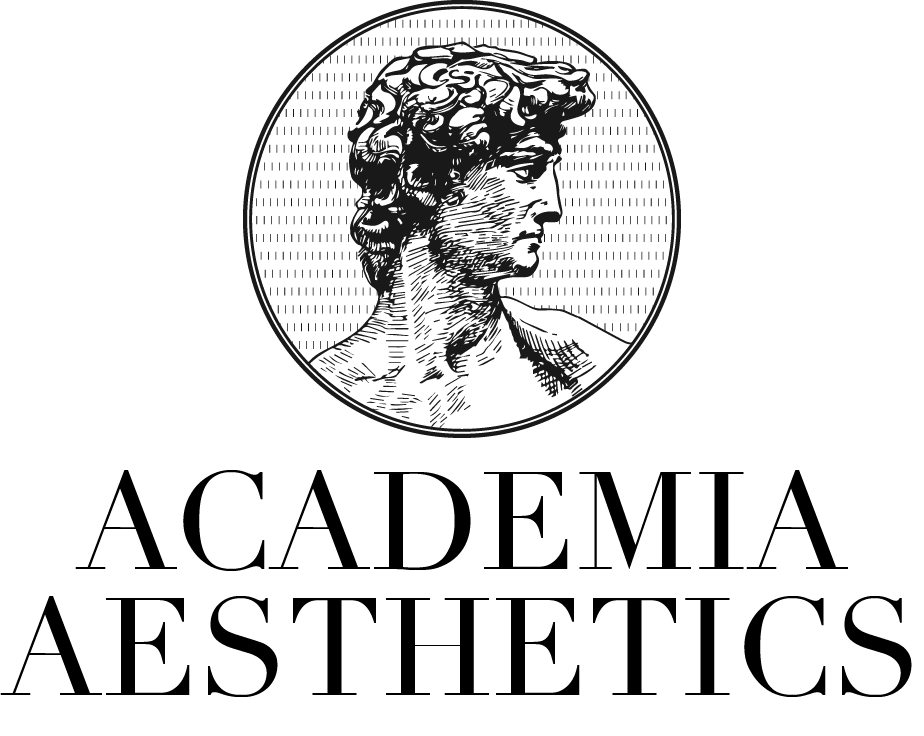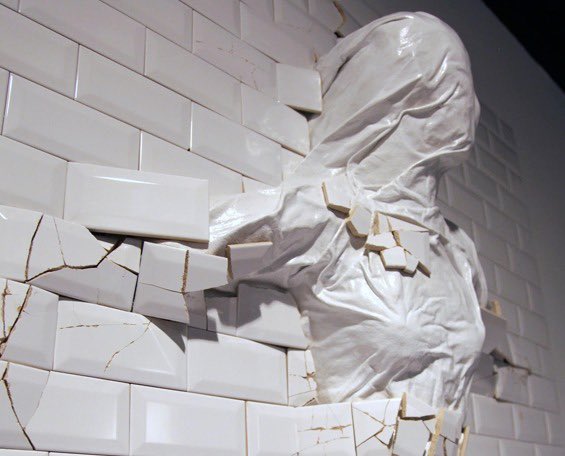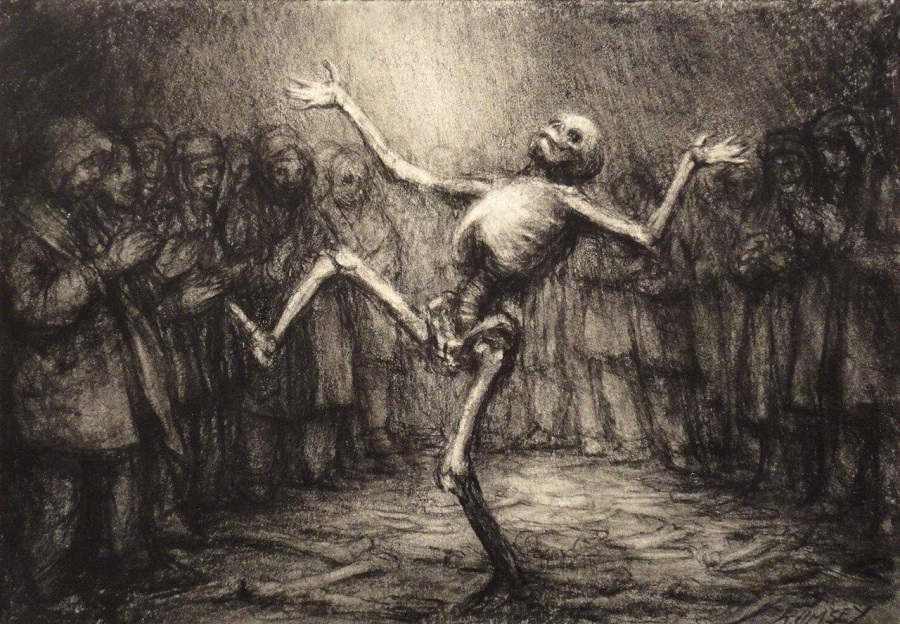For centuries, artists have been drawn to the macabre, exploring themes of death, decay, and the darker aspects of the human condition. This fascination with the morbid has given rise to a distinct artistic genre known as macabre art. While often unsettling and even disturbing, macabre art possesses a strange beauty and power that continues to captivate viewers.
Scroll to read November’s full blog post below, or SUBSCRIBE NOW and receive this post in your inbox on a monthly basis.
DID YOU KNOW?
Your engagement with our posts on social media decides the newsletter content we send you. Your upvote and engagement counts. Please remember to like, comment, or retweet our content.
Here’s some stats from November’s featured posts, as at the 30th:
- Nightmare was posted to X on November 23rd, 2023. It’s been viewed 126.7K times and reposted 478 times. It’s been liked by our audiences 3K times and bookmarked 410K times.
- Grave of a Suicide Victim was posted to X on November 26th, 2023. It’s been viewed 120.4K times and reposted 613 times. It’s been liked by our audiences 3.9K times and bookmarked 236K times.
- Finis (The End of All Things) was posted to X on November 27th, 2023. It’s been viewed 125.6K times and reposted 633 times. It’s been liked by our audiences 3.8K times and bookmarked 216K times.
Join millions of other art connoisseurs just like yourself on our X account here: @AcademiaAesthe1.
Glimpses into Shadows: Macabre Art
Macabre art encompasses a wide range of styles and techniques. From the haunting realism of James Tissot’s “The Apparition” to the unsettling nightmarescapes of Nicolai Abraham Abildgaard’s “Nightmare,” these works challenge viewers to confront their own mortality and grapple with the mysteries of the afterlife.
Beyond its aesthetic appeal, macabre art can also serve as a powerful social commentary. Artists like Francisco Goya used macabre imagery to expose the horrors of war and political oppression, while contemporary artists like Kiki Smith continue to explore themes of gender, sexuality, and the body in ways that are both unsettling and thought-provoking.
In the art niche, macabre art occupies a unique and controversial position. While some view it as a legitimate form of artistic expression, others find it distasteful and even exploitative. However, the enduring popularity of macabre art suggests that it continues to resonate with viewers on a deep and primal level.
The Enduring Allure of Macabre Art
Here are some key reasons why macabre art continues to fascinate and challenge us:
- It confronts us with our own mortality: By forcing us to confront the darker aspects of life, macabre art reminds us of our own vulnerability and the inevitable fact of death.
- It challenges our perceptions of beauty: Macabre art often blurs the lines between beauty and horror, forcing us to question our own aesthetic judgments.
- It serves as a form of social commentary: Macabre art can be a powerful tool for exposing injustice and raising awareness about important social issues.
- It taps into our primal fears and desires: Macabre art can evoke a range of powerful emotions, from fear and disgust to curiosity and excitement.
Whether you find it beautiful, disturbing, or both, there’s no denying that macabre art has a profound impact on the art niche and on our understanding of ourselves and the world around us.
Macabre Art on Display
Art and its subgenres continue to play an important role in history and culture, shaping idealisms and thoughts, provoking poetic movements and movie scripts. Let’s take a look at the art that inspired you this November.
The Apparition – James Tissot – 1885 – US
The Apparition is a testament to love’s enduring power and faith’s comforting presence; a reminder that the flame of love continues to burn, even in sorrow.
The Apparition (detail), 1885
— by James Tissot pic.twitter.com/AdDFNAQnU8
— Academia Aesthetics (@AcademiaAesthe1) November 26, 2023
Nightmare – Nicolai Abraham Abildgaard – 1800 – Denmark
Nightmare is a chilling masterpiece by Nicolai Abraham Abildgaard that depicts two women: one peacefully asleep, the other locked in a nightmare.
Nightmare (1800)
— by Nicolai Abraham Abildgaard pic.twitter.com/rfAON73DvH
— Academia Aesthetics (@AcademiaAesthe1) November 25, 2023
Grave of a Suicide Victim – Wilhelm Kotarbiński – 1900 – Poland
Haunting and enigmatic, Grave of a Suicide Victim by Wilhelm Kotarbiński is a Symbolist masterpiece that lingers in the mind long after viewing.
Grave of a Suicide Victim (1900)
— by Wilhelm Kotarbiński pic.twitter.com/Luo1vlEZY2
— Academia Aesthetics (@AcademiaAesthe1) November 25, 2023
Verso la Luce (Toward the Light) – Cipriano Mannucci – 1910 – Italy
It is said that Cipriano Mannucci’s Verso la Luce may have been inspired by a short story from Croatian artist Antun Gustav Matos (1873-1914).
Verso la luce (1910)
— by Cipriano Mannucci pic.twitter.com/gv6yjcl8FA
— Academia Aesthetics (@AcademiaAesthe1) November 26, 2023
Finis (The End of All Things) – Maximilian Pirner – 1887 – Czech
Finis tells a story of apocalyptic endings and beginnings, contemplating boundaries between the known and the unknown, visually transcending time and space.
The End of All Things (1887)
— by Maximilian Pirner pic.twitter.com/9vUwC0eFK0
— Academia Aesthetics (@AcademiaAesthe1) November 27, 2023
About the Cover Image
Graziano Locatelli’s 1995 (detail) is a permanent installation in Italy that captures the essence of “broken”, an intriguing undertone in macabre art.
If you’re interested in learning more about macabre art, here are a few resources to get you started:
- Related content on our website
- The Art Story: Macabre Art
- The Metropolitan Museum of Art: Death in Art
- The Museum of Modern Art: Gothic Art
Thanks for reading,
The Curator


